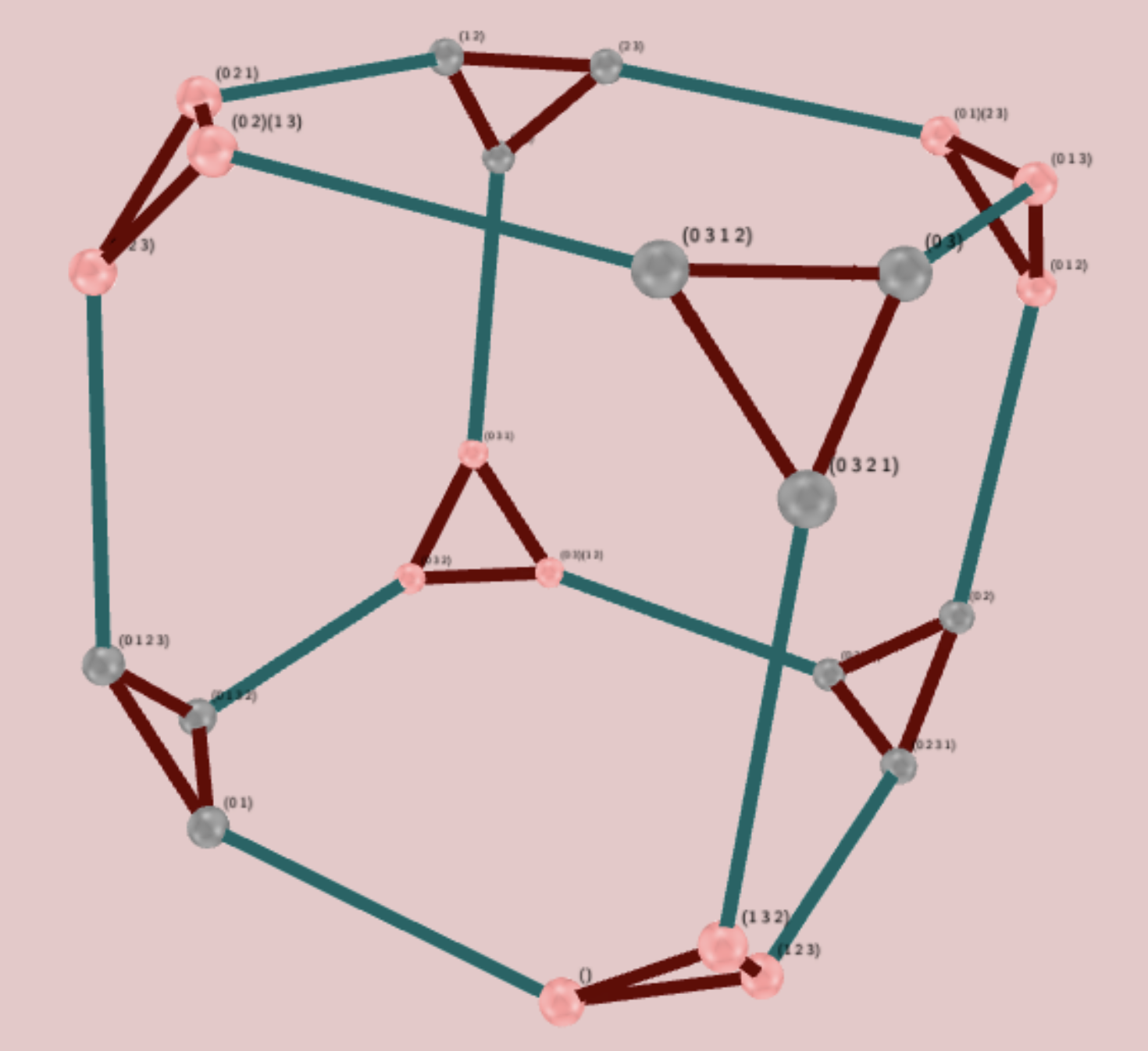Counting with Symmetries
We want to count the number of distinct -colorings of an object. Let be the set of elements being colored (e.g., faces or vertices). A coloring is a function . Two colorings are considered the same if one can be transformed into the other by applying a symmetry of the object, such as a rotation.
The symmetric group on , denoted , consists of all possible permutations of . However, not all elements of correspond to physically realisable transformations of the object. Typically, we restrict our attention to a subgroup of rigid transformations, such as rotations. More generally, any subgroup of can be considered, depending on the context.
Example 1(Equilateral Triangle).
Consider an equilateral triangle and a colour set of . We wish to colour the vertices here, so will be the vertex set . . Whether we take (flipping is allowed) or (can’t flip the triangle) doesn’t make a difference when we are working with only two colours. The possible colourings and transformations between them are as follows:
There are four equivalence classes. Hence, there are four distinct ways of colouring the triangle.
Formalization using Group Actions
Let be a finite set that is to be coloured with colours. Let be a finite group acting on .
Notation
Let be a group acting on a set . The group action of on is written as . We follow multiplication from the left, so .
For some and , define . It is easy to see that this will indeed be a group action.
Denote the set of all -colourings of by . Now let act on as follows: for some and ,
(The inverse is technically required to make this a valid action, but is also easy to intuitively validate).
Proof that this is a group action
- For any , where and , that is .
- For any and , we have
where and . Now
Orbits
Recall that the action of defines an equivalence relation on as
The equivalence classes so formed are the Orbit. Furthermore,
Note that counting the number of distinct colorings is equivalent to counting the number of orbits in the action of on .
From the Orbit-stabilizer theorem, we have
Proof.
Quick Intuitive Proof
We construct a bijection between the elements of and the left cosets of in X.
For every which maps , notice that maps . Clearly this is a bijection. As the cosets of partition , we arrive at our result.□
For , define . Note that .
Burnside’s Lemma
Theorem 2(Burnside's Lemma).
For a group acting on a set , the number of orbits is
Proof
We prove this by double counting. Let and . Make an matrix as follows such thatThe column-wise sum will be the sum, over , of all the that are fixed by a given , ie. it is the sum of . Hence
The row-wise sum will be the sum, over , of all those that fix , ie. the stabilizer of . Hence
Since they both represent the total number of in the matrix, they are the same. Let be the distinct orbits in , now
The inner sum will be since the term is being added number of times. Hence the will be times the number of orbits. Rearranging, we get
An example: 2-colorings of a cube
Consider a cube with faces which correspond to Right, Left, Front, Back, Up and Down respectively.
Let denote the set of all orientations of a cube obtained through rotations. The cardinality of will be .
Proof.
There are choices for the front face and for the side one; these uniquely determine an orientation.
Alternatively, you can embed a tetrahedron in the cube such that its edges correspond with a set of pairwise non-adjacent edges of the cube (there are two such sets of edges). It will have two orientations upon rotating the cube. This will give a isomorphism to .
The pink colored vertices form one tetrahedron, and the grey colored ones form another.□
There are four types of symmetries present here.
- Face Symmetries ( Rotations) - 3
- Face Symmetries ( Rotations) - 6
- and its inverse
- and its inverse
- and its inverse
- Edge Symmetries - 6
- Vertex Symmetries - 8
- and its inverse
- and its inverse
- and its inverse
- and its inverse
- The identity symmetry - 1
All together, we have 24 symmetries, as expected. Note that for a symmetry , , where is the number of cycles in the cycle representation of . Using Burnside’s lemma,
Thus, there are distinct ways to 2-color a cube.
